Learn how to make authentic Italian gelato at home with this beginner-friendly guide. Simple steps, quality ingredients, and expert tips for perfect results!
Making gelato at home may feel a little intimidating, especially if you’re new to the process. But with the right guidance and a dash of patience, you’ll find it’s not only doable but incredibly rewarding.
Gelato, Italy’s iconic frozen dessert, stands apart from other treats like ice cream due to its simplicity and rich, creamy texture.
In this article, we’ll take you through the differences between ice cream and gelato, and provide you with step-by-step guidance, and soon you’ll be creating your own gelato masterpieces without feeling overwhelmed.
If you would like to go straight to our Vanilla Gelato recipe and method, please click on the following link, or read along to find out more.
Jump to Classic Vanilla Gelato Recipe
Why Gelato is so Special!
If you’ve ever savoured a scoop of gelato, you’ll understand why it’s so loved. Its unique texture, lower fat content, and intense flavours come from a few simple ingredients: milk, sugar, and flavourings like fruit, nuts, or chocolate.
 Compared to ice cream, gelato uses less cream and fewer (if any) eggs, creating a denser, more flavourful dessert that feels indulgent without being too heavy.
Compared to ice cream, gelato uses less cream and fewer (if any) eggs, creating a denser, more flavourful dessert that feels indulgent without being too heavy.
Making gelato is a lot like learning to ride a bike—there’s a bit of a learning curve, but once you get the hang of it, the ride is smooth and enjoyable.
When I made my first batch of gelato, I was a tad nervous about not getting it right. Would the mixture curdle? Would it freeze properly? But with a simple recipe and some care, it turned out to be a smooth, creamy success.
Now we can share our step-by-step instructions so that you too can master homemade gelato, Italy’s sweetest tradition.
Why Gelato Uses Less Cream Than Ice Cream
One of the defining characteristics of traditional Italian gelato is its lower fat content compared to ice cream.
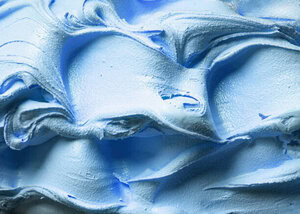 While ice cream typically uses a high proportion of cream, gelato relies primarily on whole milk, making it lighter and allowing the flavours to shine through more intensely. This reduced fat content also gives gelato its famously dense and smooth texture, as it contains less air (also known as overrun) than ice cream, resulting in a richer mouthfeel despite having less cream.
While ice cream typically uses a high proportion of cream, gelato relies primarily on whole milk, making it lighter and allowing the flavours to shine through more intensely. This reduced fat content also gives gelato its famously dense and smooth texture, as it contains less air (also known as overrun) than ice cream, resulting in a richer mouthfeel despite having less cream.
However, in home-cooked versions, a small amount of cream is often added to achieve a slightly smoother texture and prevent ice crystals from forming during freezing. This isn’t to overpower the delicate flavours but to enhance the consistency for a more luxurious experience. The added cream can help mimic the texture of professionally-made gelato, which is churned more slowly to maintain that dense, soft quality.
The beauty of gelato lies in this balance between richness and lightness.
By using mostly milk and just a touch of cream, you get the best of both worlds: a creamy, velvety texture that’s not as heavy as ice cream, allowing each flavour—whether it’s chocolate, pistachio, or lemon—to really shine through.
This lower fat content also means that gelato is served at a slightly warmer temperature than ice cream, which further enhances its soft, melt-in-the-mouth consistency and vibrant flavour profile.
To learn more about the differences between Gelato and Ice Cream, check out our article – Gelato vs Ice Cream: Isn’t it the Same Thing? – which explains the key differences between these two much-loved desserts.
Please also see our article – How to Make Irresistible Homemade Gelato with Ease – for more hints and tips on mastering homemade gelato.
The Ingredients: Simplicity is Key
Gelato is all about quality ingredients.
 At its core, traditional Italian gelato requires just a few items, but they need to be the best you can find:
At its core, traditional Italian gelato requires just a few items, but they need to be the best you can find:
- Milk, Cream, and Sugar: These are the heart of gelato. You’ll need about 500 ml of fresh milk, 200 ml of double cream, and 150 g of caster sugar. The magic lies in balancing these to achieve the perfect creaminess.
- Vanilla and a Pinch of Salt: A teaspoon of vanilla extract and a tiny pinch of fine sea salt will enhance the flavours, making everything taste more refined.
- Flavours: This is where you can have fun. Classic flavours like chocolate or pistachio are always popular but feel free to get creative with options like lemon zest or fresh mint. You’re not limited—gelato encourages experimentation.
How to Make Gelato: Step-by-Step
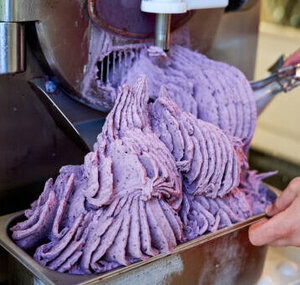 Making gelato is easier than it seems, and by following some simple steps, you’ll be able to create your first successful batch.
Making gelato is easier than it seems, and by following some simple steps, you’ll be able to create your first successful batch.
- Heat the Milk: Start by warming half of your milk in a saucepan until it’s just about to boil. Don’t rush this step—too hot, and you risk curdling the milk.
- Whisk the Yolks and Sugar: In a separate bowl, whisk together your egg yolks (if you’re using them) and sugar. Once mixed, slowly pour in the warm milk, whisking continuously to avoid cooking the eggs.
- Cook the Custard: Return the mixture to the hob and cook it gently until it thickens into a smooth custard. This part requires patience, as you want the custard to thicken slowly without scorching.
- Add the Cream and Flavours: Once the custard is ready, stir in the remaining milk, cream, and your chosen flavouring. Whether it’s rich cocoa powder or the zest of a lemon, this is where your gelato takes on its identity.
- Chill and Freeze: Allow your mixture to cool completely—overnight is best. Once chilled, churn it in an ice cream maker for about 20-25 minutes. This step transforms the liquid custard into that velvety gelato texture we love.
Serving and Storing Gelato
Gelato is best enjoyed fresh, but if you have leftovers (unlikely, but it can happen!), store it in an airtight container in the freezer. Ice crystals are the enemy, lol, so make sure to seal it well.
When it comes to serving, simplicity is often best. A small bowl or glass, maybe topped with a few fresh berries or a drizzle of olive oil over pistachio gelato, can elevate the experience.
Remember, good presentation can make even the simplest gelato feel incredibly luxurious.
Classic Vanilla Gelato Recipe
Now that we’ve explained the processes needed to create deliciously rich, creamy Gelato, here’s our recipe and method for you to try out yourself.
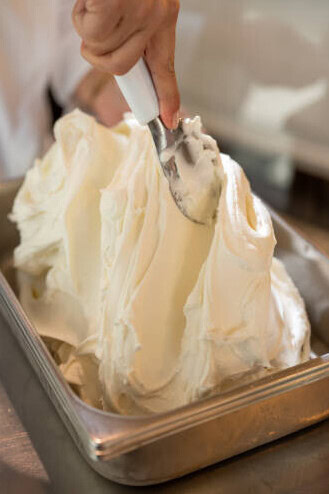 Ingredients:
Ingredients:
- 500 ml whole milk
- 200 ml double cream
- 150 g caster sugar
- 1 vanilla pod (or 1 tsp vanilla extract)
- 4 large egg yolks
- A pinch of fine sea salt
Method:
Prepare the Vanilla:
- If using a vanilla pod, slice it open lengthways and scrape out the seeds. Add both the seeds and the pod to a saucepan with the milk. If using vanilla extract, you can skip this step for now.
For tips on how to extract vanilla seeds from a vanilla pod, check out our article – How to Make Delicious, Indulgent Homemade Ice Cream.
Heat the Milk:
- Pour the milk (with the vanilla seeds and pod) into a medium-sized saucepan. Heat gently on a low flame until it just begins to simmer (don’t let it boil). Remove from the heat and let the vanilla infuse while you prepare the rest. If you’re using vanilla extract instead of a pod, stir it in after heating the milk.
Whisk the Egg Yolks and Sugar:
- In a large bowl, whisk the egg yolks and sugar together until they become pale and slightly thickened. This step helps create a smooth, creamy texture in your gelato.
Temper the Eggs:
- Slowly pour the warm milk into the egg mixture while whisking continuously. This gentle combination prevents the eggs from scrambling. Once mixed, pour the entire mixture back into the saucepan.
Make the Custard:
- Place the saucepan over a low to medium heat. Stir constantly with a wooden spoon or spatula until the mixture thickens slightly and coats the back of the spoon. Be patient here – it should take around 10 minutes. You don’t want it to boil, as this would curdle the eggs.
Add the Cream:
- Remove the custard from the heat and stir in the double cream. This will cool the mixture and give it an even creamier texture.
Chill the Mixture:
- Strain the mixture through a fine sieve into a large bowl to remove any bits of vanilla pod or potential eggy lumps. Let it cool to room temperature, then cover and place in the fridge for at least 4 hours, or ideally overnight. The colder the mixture, the creamier your gelato will be.
Churn the Gelato:
- Once chilled, pour the mixture into your ice cream maker and churn according to the manufacturer’s instructions (usually around 20–25 minutes).
- If you do not have an ice cream maker, pour the mixture into a lidded, freezer-safe container and freeze. Every 30 minutes, remove from the freezer and stir vigorously with a fork or whisk to break up ice crystals. Repeat this process for 2–3 hours until the ice cream is smooth and creamy. See our article – How to Make Homemade Ice Cream Without an Ice Cream Maker
Freeze:
- Once churned, transfer your gelato into an airtight container and freeze for at least 2 hours before serving, to let it firm up to the perfect scooping texture.
Creative Serving Ideas for Classic Vanilla Gelato
While classic vanilla gelato is delightful on its own, there are plenty of ways to elevate its flavour and presentation for an even more indulgent experience. Here are some serving ideas to inspire you:
- Fresh Fruit Toppings: Enhance the natural sweetness of vanilla gelato by adding a handful of fresh, seasonal fruit. Try juicy strawberries, raspberries, or slices of ripe peaches for a refreshing contrast, or a few slices of caramelised banana for a warm, rich pairing.
- Homemade Sauces: A drizzle of warm chocolate or caramel sauce can take your vanilla gelato to the next level. For a more luxurious touch, try a rich espresso shot poured over your scoop to make an affogato, a classic Italian dessert.
- Crumbled Biscuits or Nuts: For added texture, sprinkle your gelato with crushed digestive biscuits, crumbled amaretti, or roasted chopped nuts like hazelnuts, pistachios, or almonds. The crunch will add a delightful contrast to the gelato’s smooth texture.
- Pair with Baked Goods: Serve a scoop of vanilla gelato alongside warm brownies, a slice of apple tart, or even between two cookies for an ice cream sandwich. The contrast between warm and cold will make for a truly satisfying dessert.
- Olive Oil and Sea Salt: For a more adventurous flavour combination, drizzle a high-quality extra virgin olive oil over your vanilla gelato and sprinkle with a pinch of sea salt. This creates an intriguing sweet and savoury profile that’s surprisingly delicious and very Italian!
These simple yet creative additions can elevate your vanilla gelato, transforming a humble scoop into a memorable dessert.
Whether keeping it traditional or exploring new flavour pairings, vanilla gelato is a versatile base that pairs beautifully with a variety of ingredients.
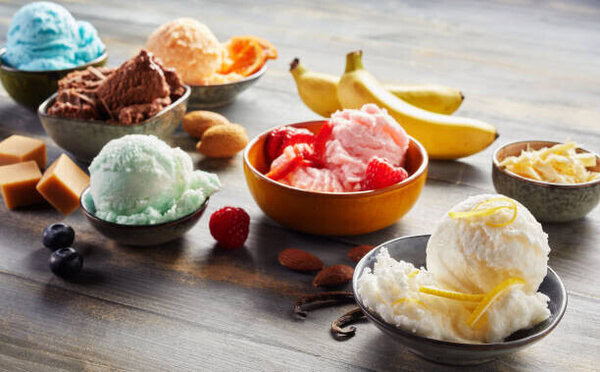
The Final Scoop
Creating your own gelato might seem like a challenge at first, but it’s a skill that pays off in delicious, homemade desserts.
Whether you’re sticking to classic flavours or venturing into creative territory, making gelato is a journey worth taking. And the best part? Each time you make it, you’ll get better, more confident, and more excited to try new flavours.
So, what are you waiting for? Dive in and enjoy the sweet rewards!
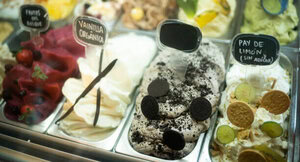 We hope that you have enjoyed our article: Mastering Gelato – A Beginner’s Guide To Italy’s Sweetest Tradition – and above all we hope that we have given you some inspiration and guidance to try this dessert at home.
We hope that you have enjoyed our article: Mastering Gelato – A Beginner’s Guide To Italy’s Sweetest Tradition – and above all we hope that we have given you some inspiration and guidance to try this dessert at home.
If you have any questions, please drop us a comment below.
Stay connected for more homemade ice cream inspiration! Share your homemade ice cream masterpieces with us on social media, and connect with a community of ice cream enthusiasts. Join us for mouthwatering recipes, expert tips, and exclusive updates. Follow us on Pinterest, Instagram, Facebook, and X by clicking on any of the social media icons below.










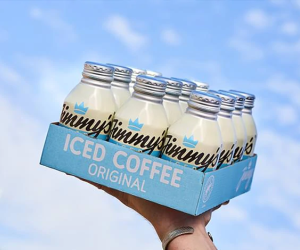










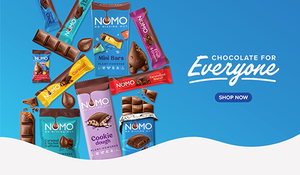









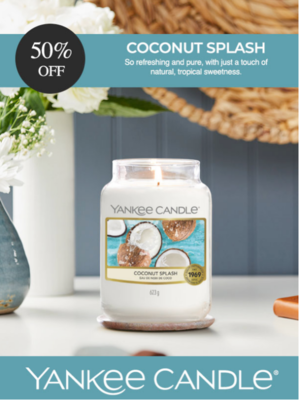





Hi!
I always enjoy your posts, and I always learn something new. I don’t think I’ve ever had gelato. I know I’ve seen it in grocery stores, but I’ve never tried it. It does sound interesting and possibly less fattening. I noticed in your recipe that you mentioned caster sugar. I don’t think I’ve heard of that before. Is possibly called something else in the U.S.? Also, you sometimes give instructions for ice cream without using an ice cream machine. Is that possible with gelato as well?
– Scott
Hey Scott,
Great to see you again. Glad to hear that you enjoy our posts and feel you always learn something new! That’s always rewardng to read.
Yes, Gelato is a healthier option to Ice cream as it uses more milk and less cream and it is a delicious option.
I think US equivalent to Caster suger would be ‘super fine sugar’, essentially granulated sugar, ground down.
Our article provides details on making gelato without an ice cream maker, much the same process as making ice cream. Although for Gelato to be Gelato, the churning process needs to be slower, so as to incorporate less air. Our article – Gelato vs Ice Cream – Isn’t it the Same Thing? – highlights the differences between the two.
Thanks for your thoughts.
All the best
Cherie :o)
The blog article does a fantastic job breaking down the art of making gelato in a beginner-friendly way. It makes me want to try making it at home!
The step-by-step process feels approachable, even for someone like me who’s a bit intimidated by desserts. It’s also refreshing to see the focus on using high-quality, simple ingredients something that truly makes gelato shine. The tips for ensuring a smooth texture with a bit of cream are particularly helpful, especially for avoiding those dreaded ice crystals.
This post is a perfect guide for anyone who wants to try their hand at this iconic Italian treat without feeling overwhelmed. Thanks for making it feel achievable!
Hi Kavitha,
Thank you for your comments and thoughts.
Really glad that you appreciated our article and the content therein, even happier to hear that we have inspired you to give Gelato a go.
We do our utmost to make homemade ice cream, and gelato feel achievable for all, whether you’re a seasoned pro or a beginner.
We have a selection of articles aimed at Beginners to Guide them through every step of the process, as well as articles that give guidance on best practices to avoid the dreaded Freezer Burn.
If you haven’t yet had the chance, please check these articles out for more hints, tips, and guidance.
If you do give any of our recipes a go, we would love to hear how you get on!
Thanks again for dropping by.
Cheers
Cherie